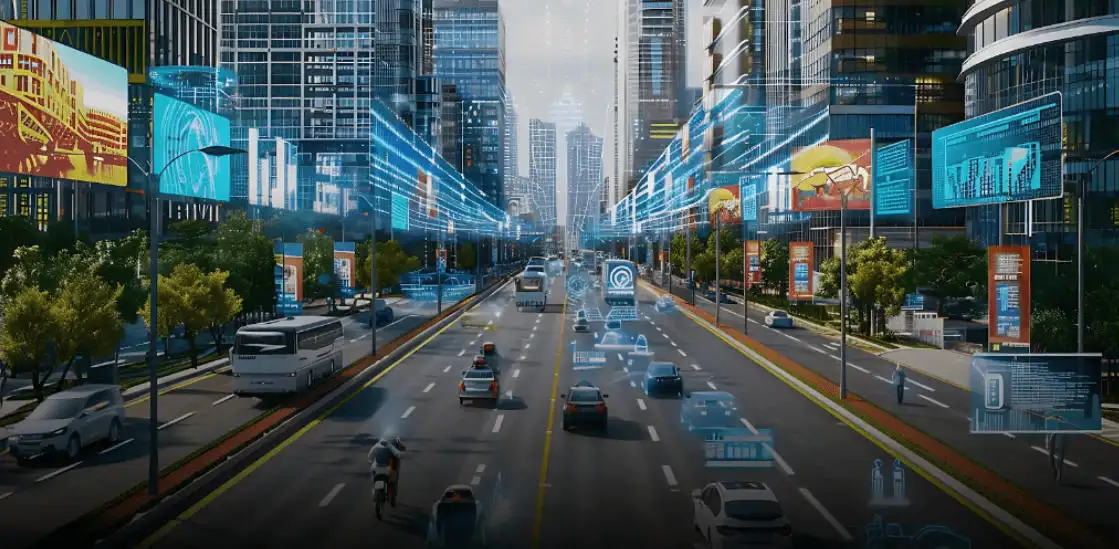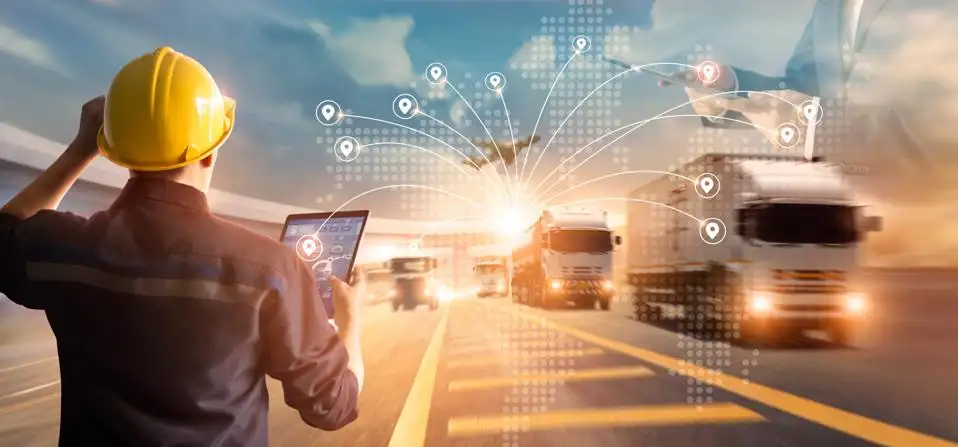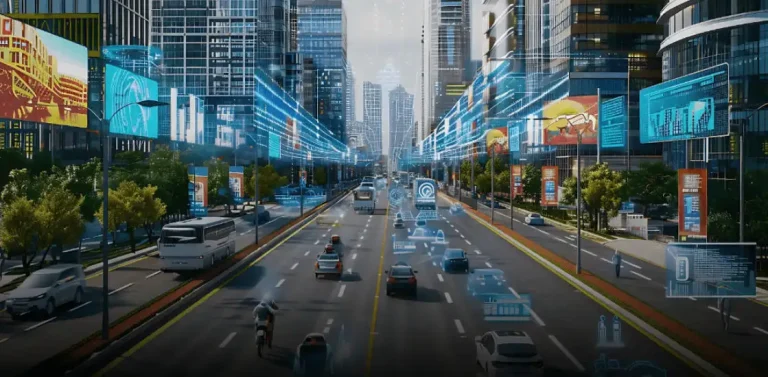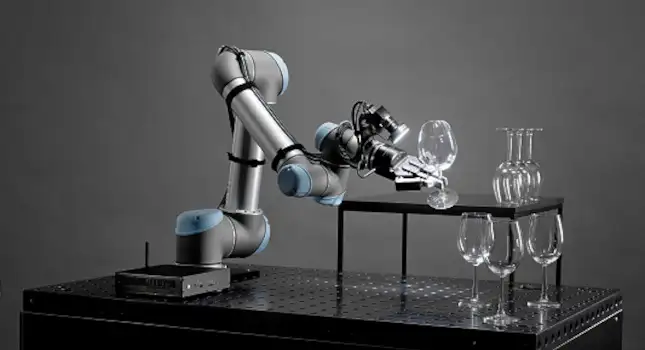
The transportation and logistics field is experiencing a major change. This shift is driven by the practical use of artificial intelligence. Global supply networks are becoming more intricate. Companies struggle with problems like late deliveries, poor routing, and insufficient openness. Artificial intelligence (AI) is becoming a key force. It provides answers that make work smoother, cut expenses, and boost client contentment. This blog looks at how AI is changing the industry. We focus on its uses, advantages, and real-world effects expected for 2025. We’ll also introduce Wesar Intelligence. This company is a top provider of self-driving mobile robot systems. Finally, we tackle usual questions about AI’s part in logistics.
The Role of AI in Modern Logistics
AI is changing how logistics firms work. It tackles inefficiencies with exactness and expandability. From predictive analysis to self-operating systems, AI allows smarter choices across broken-up supply chains. By 2025, the worldwide logistics market should hit important goals. AI will be central in boosting effectiveness and green practices.
Why AI Matters in Logistics
The logistics area deals with ongoing difficulties. These include:
- Spoilage of goods:Delays in refrigerated shipments cause waste.
- Inefficient routing:Badly planned routes raise fuel expenses and delivery times.
- Inventory bottlenecks:Unorganized warehouse stock slows activities.
- Lack of visibility:Limited openness hampers supply chain coordination.
- Environmental impact:Inefficiencies add to larger carbon footprints.
AI acts like a harmonizing power. It syncs suppliers, makers, and distributors. This optimizes work processes and lowers waste. By using machine learning, live data study, and automation, firms can beat these obstacles. They can then reach noticeable betterments.
Key Applications of AI in Transportation and Logistics
AI’s adaptability lets it handle many logistics problems. Below are the main uses driving practical innovations of AI in transportation and logistics for 2025.
Demand Forecasting
Correct demand forecasting is vital for keeping ideal stock levels. AI-powered predictive analysis tools look at past sales information, seasonal habits, and market shifts. They predict product needs with great exactness. For example, firms using AI-driven systems have seen:
- Up to 15% betterment in demand prediction correctness.
- 10% less extra stock, freeing up storage room.
- Improved supply chain responsiveness, guaranteeing prompt deliveries.
These steps lower overstocking. They reduce storage expenses. They also make customers happier by making sure items are there when required.
Route Optimization
AI transforms route planning. It mixes machine learning with live traffic information and geographic mapping. These systems make delivery schedules better. They lower fuel use and enhance shipment quality. Important gains include:
- Fuel savings reaching 20% through better routes.
- Shorter travel times, boosting delivery dependability.
- Less environmental harm due to decreased fuel usage.
Logistics companies adopting AI route optimization report big cost savings. They also see improved work effectiveness. This makes it a foundation of current logistics.
Warehouse Automation
AI-driven warehouse automation includes Autonomous Mobile Robots (AMRs) and Automated Storage and Retrieval Systems (ASRS). These make inventory control and material handling smoother. These systems:
- Make the most of vertical space use, boosting storage density.
- Cut down manual work, lowering operating expenses.
- Reduce mistakes in picking and sorting, ensuring exactness.
For instance, AI-powered AMRs can move through warehouses on their own. They find problems and handle information in under 30 seconds. This leads to quicker issue solving and better efficiency.
Supply Chain Visibility
Live tracking and watching are essential for clear supply chains. AI, joined with IoT devices and cloud platforms, gives end-to-end sight. It does this by:
- Flagging possible problems, like temperature changes in cold chain logistics.
- Ensuring quality checks to lower spoilage chances.
- Supplying live information for knowledgeable choices.
This openness lets businesses react fast to interruptions. It guarantees smooth activities and client trust.
Customer Service Enhancement
AI-powered virtual helpers and chatbots are changing client interactions in logistics. These tools:
- Manage questions and give live shipment updates.
- Solve common problems instantly, cutting down response times.
- Boost client contentment through personalized help.
Companies using these smart systems report quicker response times. They also see higher client satisfaction levels. This proves AI’s worth in making service quality better.
Benefits of AI Integration in Logistics

Bringing AI into transportation and logistics gives real benefits. These drive efficiency, lower costs, and support green practices. Here’s a breakdown of the key gains:
| 益处 | 影响 |
| Cost Reduction | Automation lowers labor costs and lessens overstocking. This saves up to 15%. |
| 运营效率 | AI makes workflows smoother. It speeds up material transport by up to 2 times. |
| 减少误差 | Precise movement and automation lower mistakes like misplacement by 90%. |
| Sustainability | Better routes and inventory control cut carbon releases by 20%. |
| Customer Satisfaction | Live updates and quicker replies improve client experience by 25%. |
These gains together boost supply chain results. They make AI essential for logistics firms wanting to stay competitive in 2025.
Wesar Intelligence: Leading the Way in Autonomous Mobile Robots
Wesar Intelligence Co., Ltd. is a complete provider of smart factory answers. It specializes in practical innovations of AI in transportation and logistics. As a leader in autonomous mobile robots (AMRs), Wesar offers made-to-order answers. These include green intelligent logistics robots, Warehouse Management Systems (WMS), and Automated Storage and Retrieval Systems (ASRS). Focusing on green practices and efficiency, Wesar’s solutions:
- Improve inventory control with live tracking and predictive analysis.
- Make warehouse space use better through modern ASRS technology.
- Lower operating costs and mistakes with AI-driven AMRs.
Wesar’s skilled team gives complete support. This includes consulting, software creation, on-site setup, and after-sales service. Their custom answers empower businesses in areas like 3C manufacturing, retail, automotive, and e-commerce. They help achieve top-notch operations and meet changing market needs.
结论
The practical innovations of AI in transportation and logistics are reshaping the field. They offer answers to long-standing problems. These include inefficiencies, high costs, and insufficient openness. From demand forecasting and route improvement to warehouse automation and customer service betterments, AI is driving noticeable gains. These are in efficiency, green practices, and client contentment. Companies like Wesar Intelligence are leading. They provide AI-powered answers that help businesses succeed in a tough market. As we head into 2025, using these innovations will be vital. Logistics companies must do this to stay ahead.
FAQs
How do practical innovations of AI in transportation and logistics improve efficiency?
AI makes logistics smoother. It improves routes, automates warehouse jobs, and makes demand forecasting better. For example, AI-driven route improvement can lower fuel use by up to 20%. Also, AMRs boost warehouse efficiency. They minimize mistakes and speed up material handling.
What role does AI play in supply chain visibility?
AI, mixed with IoT and cloud platforms, gives live tracking and watching. It flags problems like temperature shifts in cold chain logistics. This ensures end-to-end sight. It lowers spoilage chances and allows fast choices.
How can AI enhance customer service in logistics?
AI-powered chatbots and virtual helpers manage questions. They give live shipment updates and solve problems instantly. This leads to quicker reply times. It also brings a 25% rise in client contentment for companies using these tools.
Why is warehouse automation critical for 2025 logistics?
Warehouse automation, powered by AI and AMRs, makes the most of space use. It lowers labor expenses and lessens mistakes. For instance, ASRS systems boost storage density. AMRs guarantee exact material movement. This makes warehouses more effective and cost-efficient.
How does Wesar Intelligence contribute to AI innovations in logistics?
Wesar Intelligence provides AI-driven answers like AMRs, WMS, and ASRS. These are tailored to industries such as e-commerce and automotive. Their systems make inventory control better. They cut operating costs and improve supply chain quickness. This drives practical innovations of AI in transportation and logistics.








